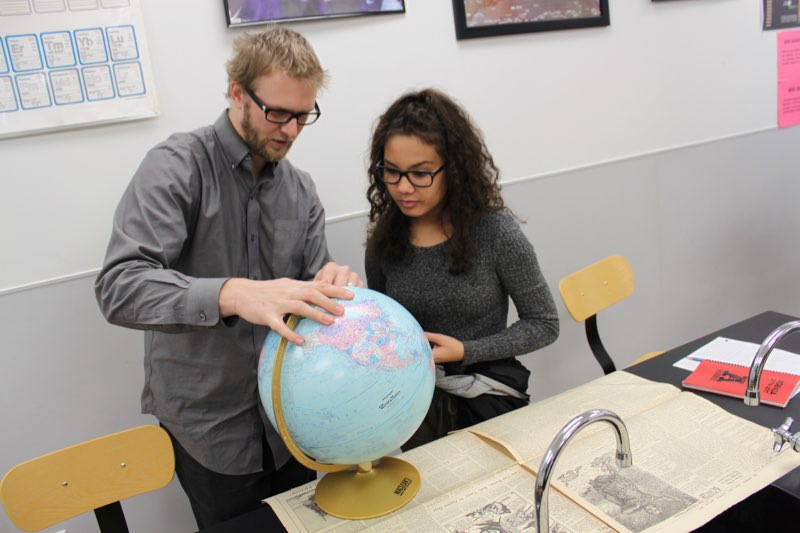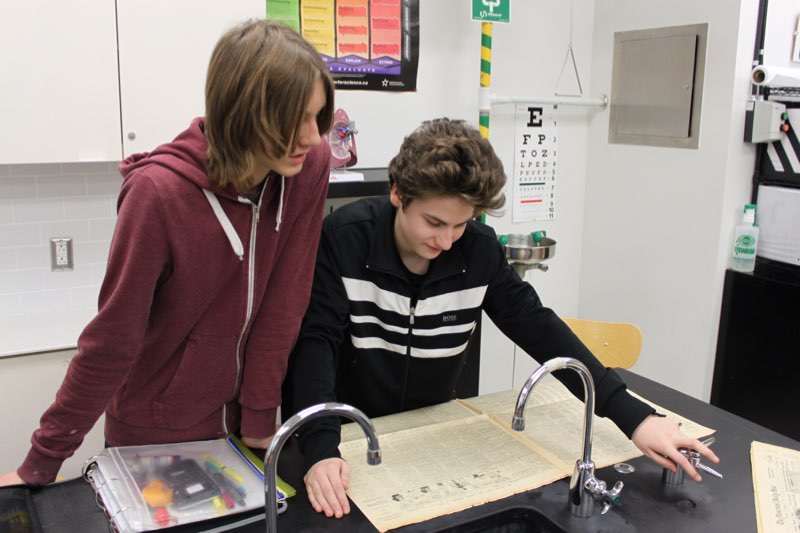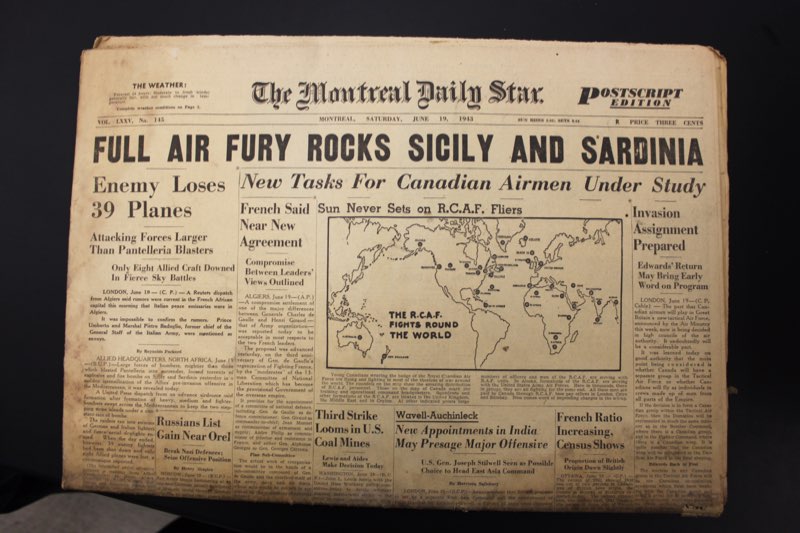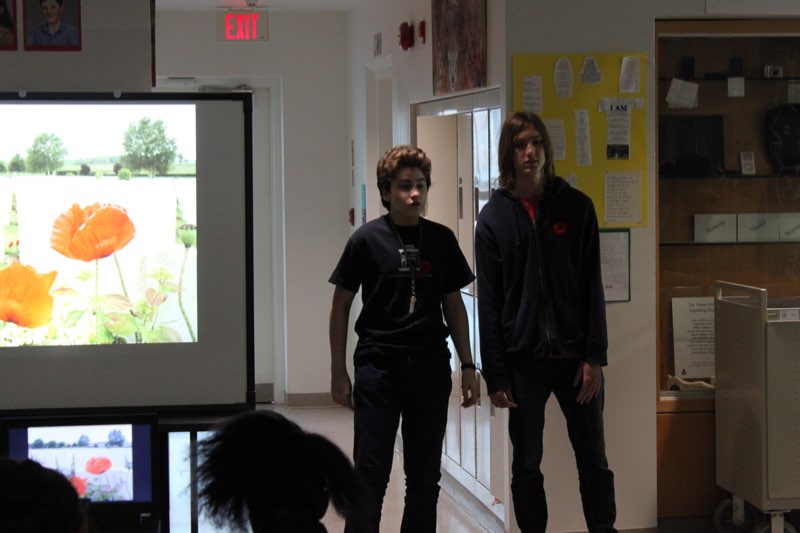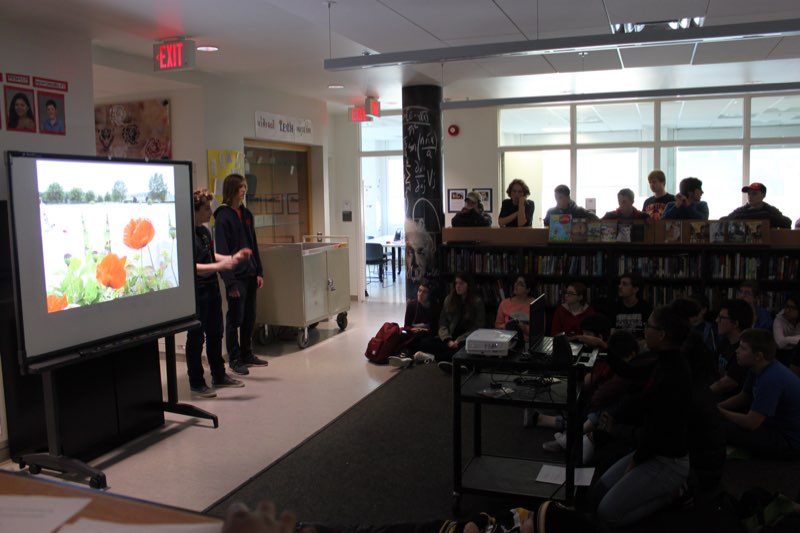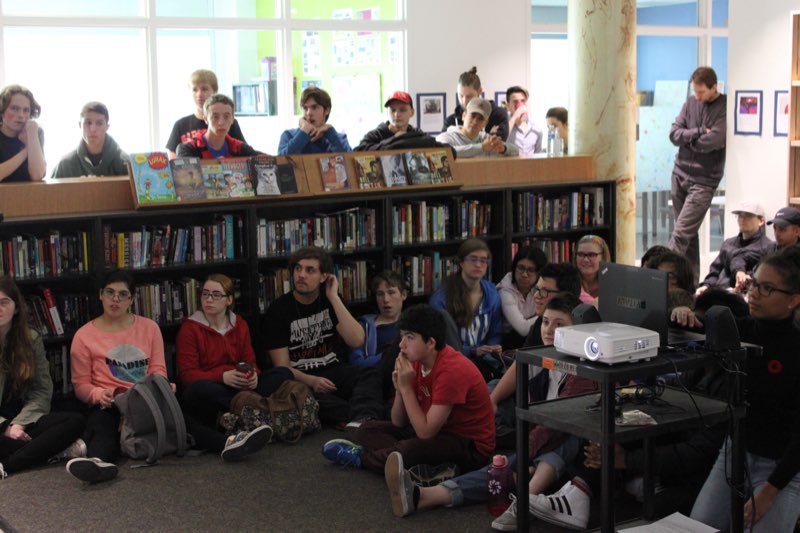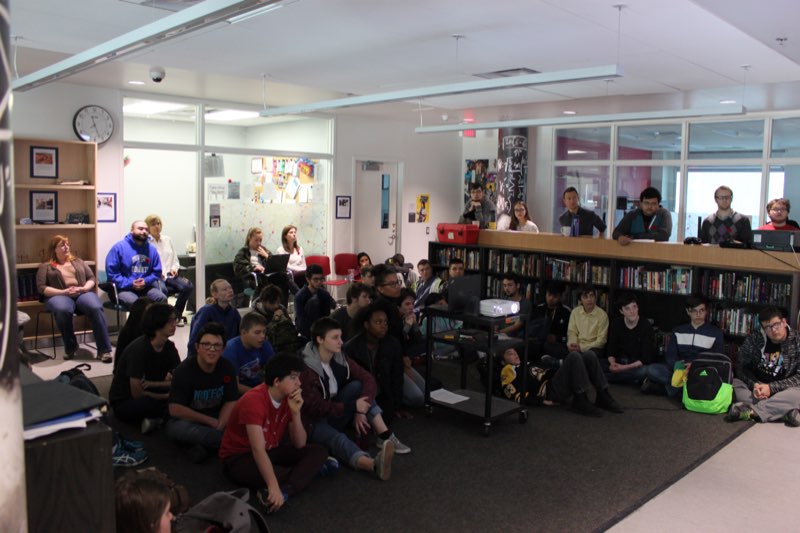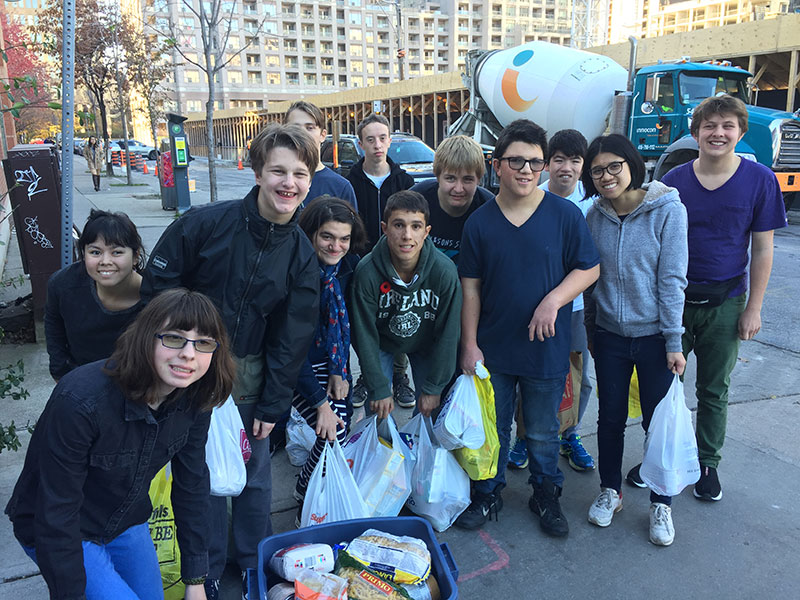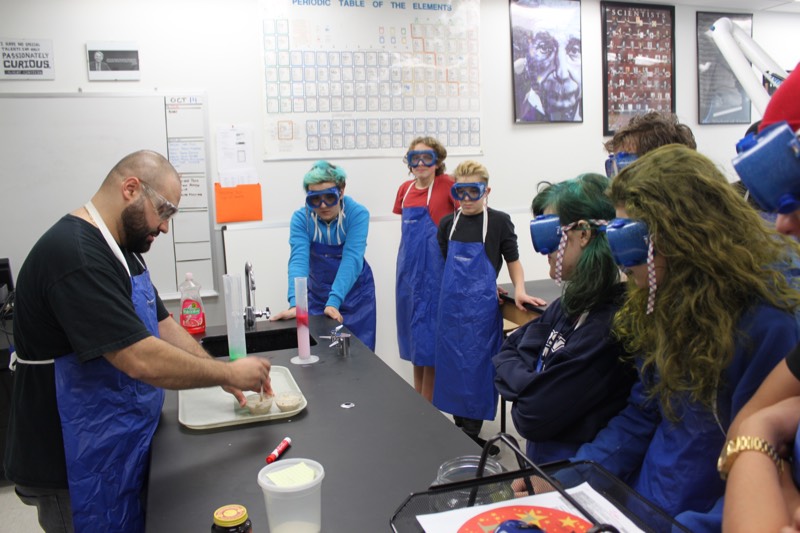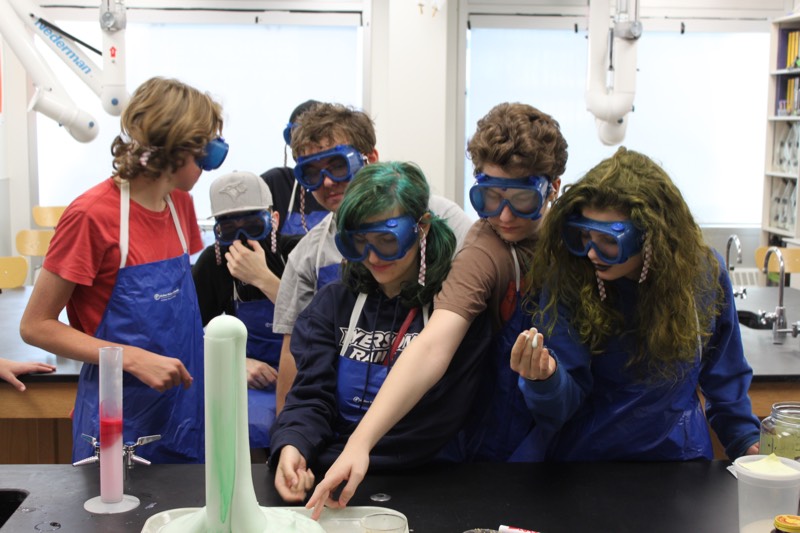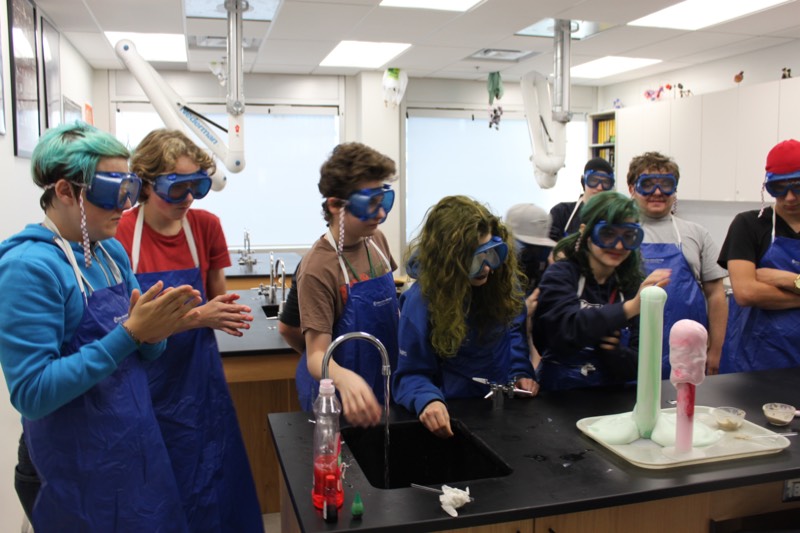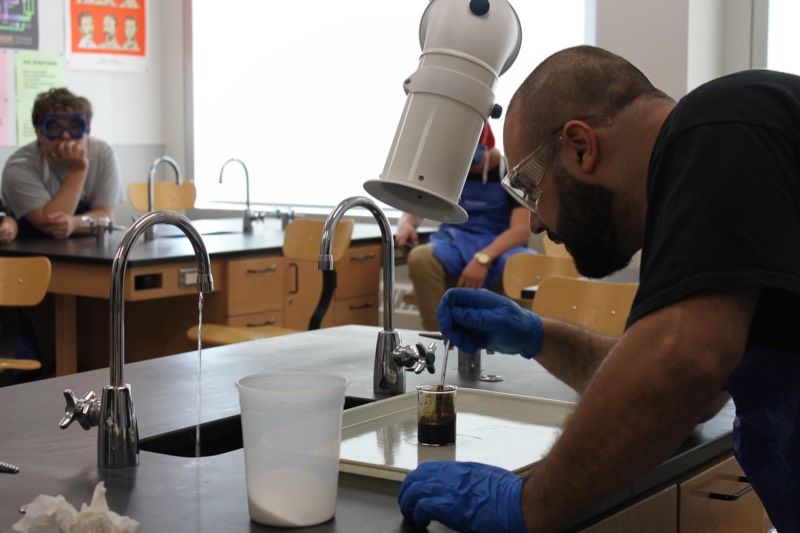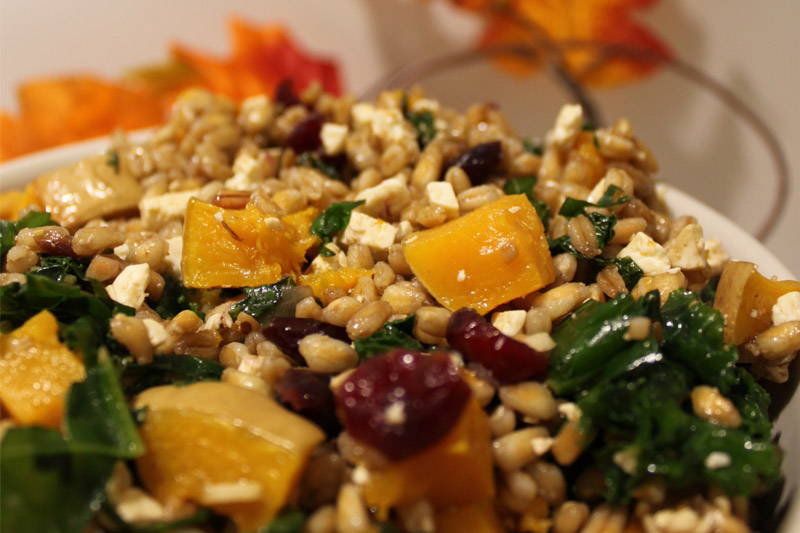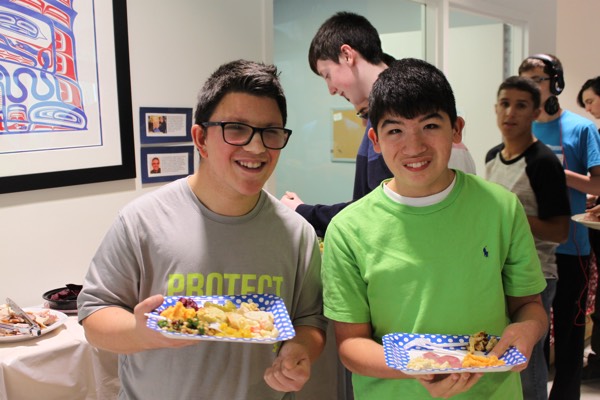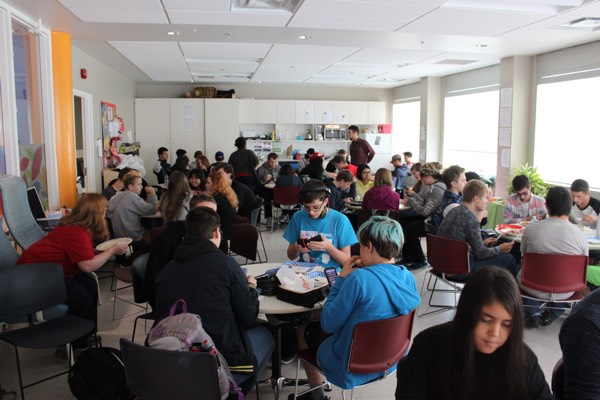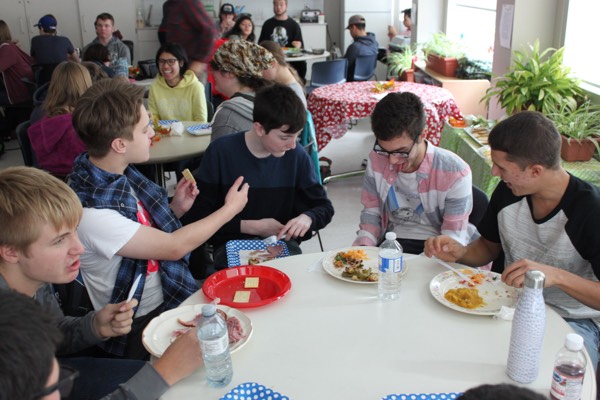YMCA Academy Grade 10 Canadian History students excitedly crowded around a Montreal Star newspaper dated August 11th, 1943, laughing at the prices of new business suits at $5.95. Once the stack discoloured papers were distributed to each student they were asked to become historical investigators and look for clues about the past in the articles and advertisements. Primary sources offer a window into historical perspective that many historical texts, and papers can’t match. There is something exciting about being able to reach out and touch the past.
An advertisement for Leg Tint caught the eye of some students, leading to a discussion on why women from Canada in the 1940s would want to tint their legs. The concepts of rationing, standards of beauty, price inflation, modesty, and paratroopers all organically sprang up from the conversation around a single advertisement from 1943. It made sense that nylon was being diverted to making parachutes making nylons to come by for women during the war. It was surprising to learn, though, that women would use makeup to tint their legs and draw fake seams in order to give the appearance of wearing nylons.
Students also discussed the feelings that people from the past might have had when reading about certain victories and defeats in the newspaper. These stories may have inspired pride, or fear, or anger for a variety of reasons. The hands-on, experiential inquiry that can happen with objects and documents from the past allowed the Grade 10 Canadian History class to get a little bit closer to seeing the past through the eyes of those that lived there.
Check out more photos from this event on our Facebook page!

